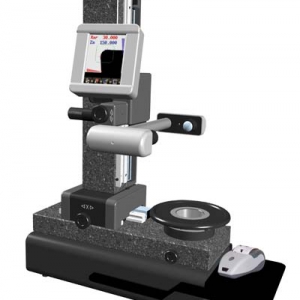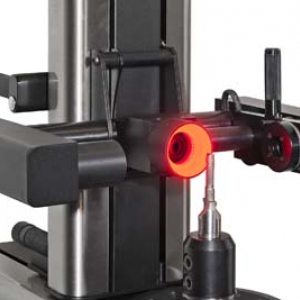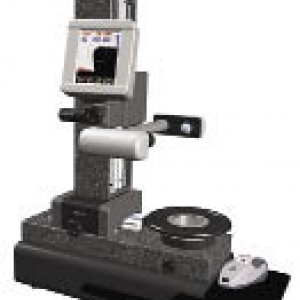Contact Details
The Leonardo electric spindle from Koma Precision is the latest innovation from Alberti featuring automatic tool change and speeds up to 60,000 rpm. This system is comprised of a main tool body with indexing pin, a stop block with cable and a controller unit. The controller unit is integrated with the machine controller so that the main functions of the head, for example speed, can be directly controlled from the machine. The electric contacts in the stop block and the indexing pin feature a safety cover and allow electric connections only when the head is loaded into the machine spindle.
The Leonardo system can achieve a speed of 60,000 rpm while maintaining the spindle position and accuracy. The stop block is custom made for each machine type so that it fits perfectly. A 32' cable is provided to easily connect the stop block to the machine controller. This system can be retrofitted on all machines capable of installing a stop block as well as on brand new machining centers as an add-on option.
Leonardo is particularly suitable for small machining such as drilling, milling, grinding and engraving up to a 6mm collet.
Related Glossary Terms
- centers
centers
Cone-shaped pins that support a workpiece by one or two ends during machining. The centers fit into holes drilled in the workpiece ends. Centers that turn with the workpiece are called “live” centers; those that do not are called “dead” centers.
- collet
collet
Flexible-sided device that secures a tool or workpiece. Similar in function to a chuck, but can accommodate only a narrow size range. Typically provides greater gripping force and precision than a chuck. See chuck.
- gang cutting ( milling)
gang cutting ( milling)
Machining with several cutters mounted on a single arbor, generally for simultaneous cutting.
- grinding
grinding
Machining operation in which material is removed from the workpiece by a powered abrasive wheel, stone, belt, paste, sheet, compound, slurry, etc. Takes various forms: surface grinding (creates flat and/or squared surfaces); cylindrical grinding (for external cylindrical and tapered shapes, fillets, undercuts, etc.); centerless grinding; chamfering; thread and form grinding; tool and cutter grinding; offhand grinding; lapping and polishing (grinding with extremely fine grits to create ultrasmooth surfaces); honing; and disc grinding.
- milling
milling
Machining operation in which metal or other material is removed by applying power to a rotating cutter. In vertical milling, the cutting tool is mounted vertically on the spindle. In horizontal milling, the cutting tool is mounted horizontally, either directly on the spindle or on an arbor. Horizontal milling is further broken down into conventional milling, where the cutter rotates opposite the direction of feed, or “up” into the workpiece; and climb milling, where the cutter rotates in the direction of feed, or “down” into the workpiece. Milling operations include plane or surface milling, endmilling, facemilling, angle milling, form milling and profiling.





 PRODUCTS
PRODUCTS

